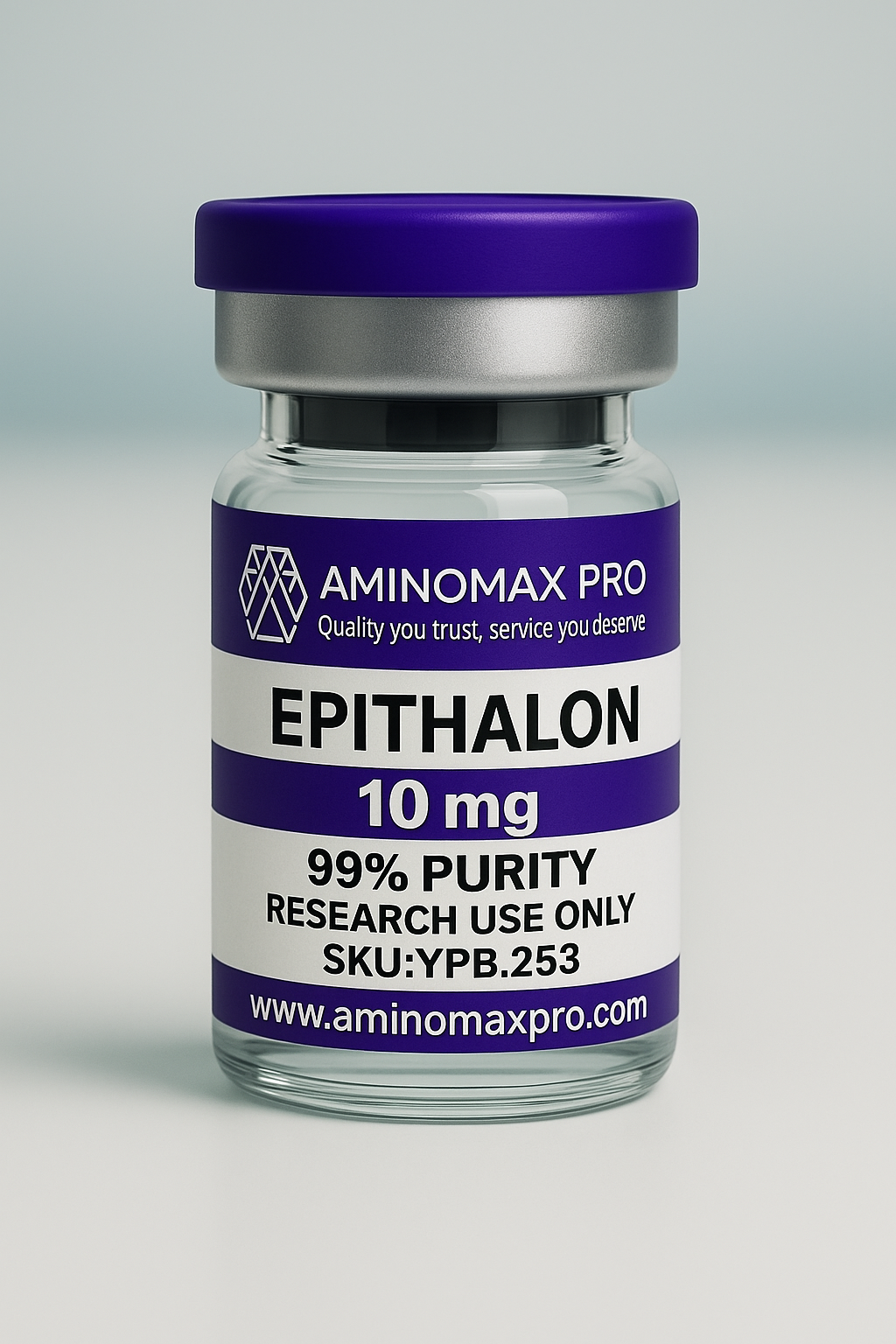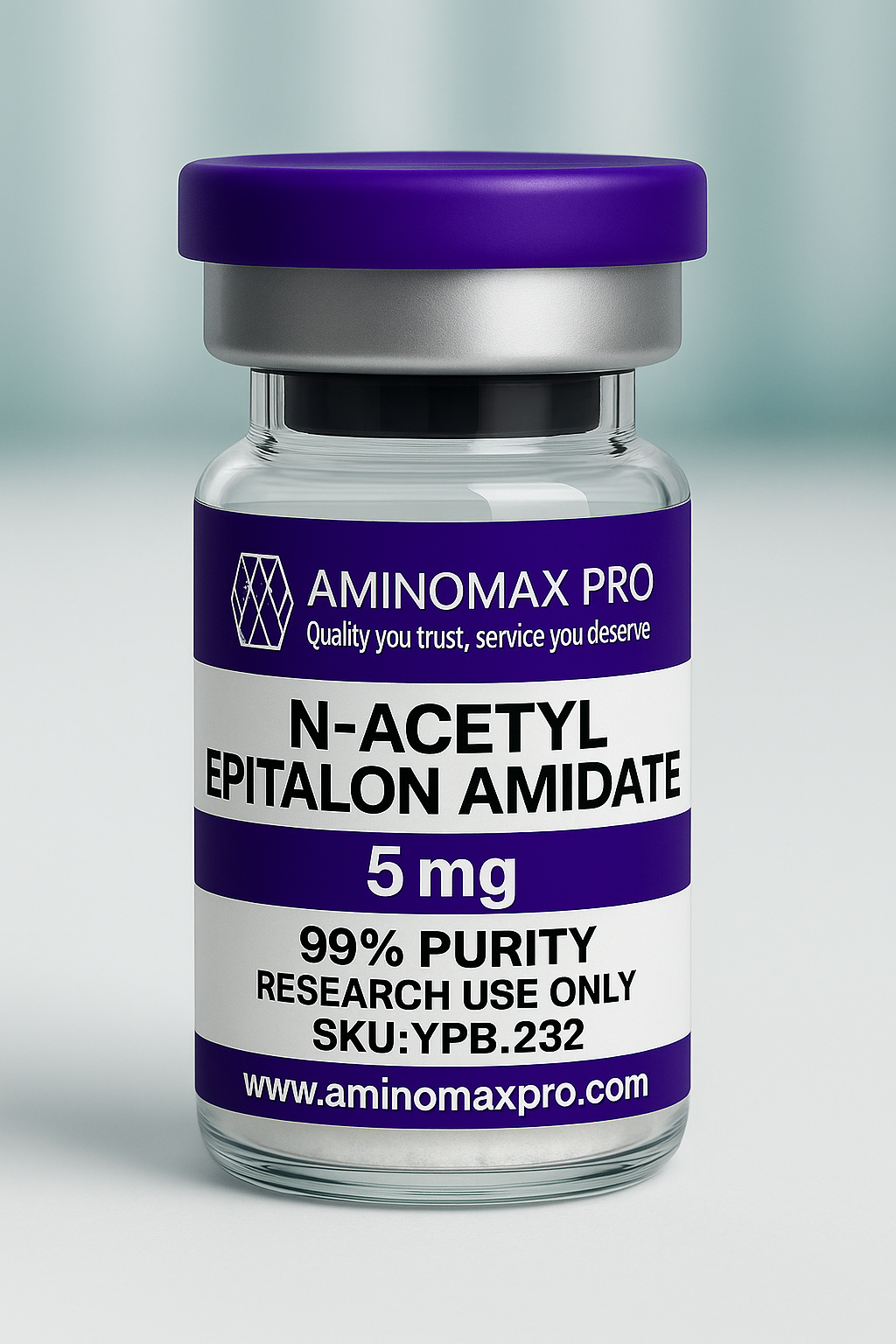Description
Epithalon – Technical Biochemical Mechanism Profile
(Epithalamin-Derived Tetrapeptide; Telomerase & Circadian Gene Modulation Peptide – Research Use Only)
Epithalon (Ala-Glu-Asp-Gly) is a synthetic tetrapeptide modeled after the active component of the pineal peptide extract Epithalamin.
In vitro and molecular biology research indicates that Epithalon influences telomeric DNA maintenance, circadian gene transcription, and oxidative defense pathways via telomerase activation, shelterin protein regulation, and SIRT/FOXO transcriptional signaling.
✅ 1. Primary Molecular Targets
Although Epithalon does not bind a classical cell surface receptor, observed activity involves:
| Target System | Role |
|---|---|
| TERT (telomerase reverse transcriptase) | Telomere elongation & chromosomal end protection |
| Shelterin Complex Proteins | TRF1, TRF2, POT1, TPP1 telomere stabilization |
| SIRT1 / SIRT3 | Epigenetic and mitochondrial regulation |
| CLOCK/BMAL1 | Circadian transcriptional machinery |
✅ 2. Telomere Maintenance Pathways
A. Telomerase Gene Activation
Epithalon has been shown to upregulate:
-
TERT gene transcription
-
Assembly of telomerase holoenzyme (TERT + TERC)
-
Telomeric DNA repeat synthesis (TTAGGG)n
B. Shelterin Pathway Modulation
Research reports increased expression of:
-
TRF1 / TRF2 — telomere-capping proteins
-
POT1, TPP1 — single-stranded telomeric DNA protection
These proteins prevent DNA damage signaling at chromosome ends.
✅ 3. Circadian Rhythm Gene Interaction
Epithalon modulates central clock genes and transcription loops:
-
↑ CLOCK / BMAL1 expression
-
Normalization of PER1 / PER2 feedback cycles
-
Crosstalk with melatonin regulatory pathways in pinealocyte models
Circadian normalization affects downstream metabolic gene oscillation.
✅ 4. Key Enzymes & Second Messengers
| Enzyme / Factor | Mechanistic Role |
|---|---|
| Telomerase (TERT + TERC) | Telomere extension |
| SIRT1 | NAD⁺-dependent deacetylation of p53, FOXO, and clock proteins |
| FOXO1 / FOXO3a | Stress-response transcription factors |
| p53 / p21 | Cell cycle and DNA-damage checkpoints |
| Catalase, SOD2, GPX1 | Antioxidant enzyme induction |
Second messengers:
-
NAD⁺/SIRT axis
-
Ca²⁺-dependent nuclear signaling
-
AMPK and MAPK phosphorylation patterns in some cell lines
✅ 5. Gene Targets Commonly Monitored in Research
| Functional Category | Gene Examples |
|---|---|
| Telomere Maintenance | TERT, TRF1, TRF2, POT1, TPP1 |
| Circadian Regulation | CLOCK, BMAL1, PER1, PER2, CRY1 |
| Antioxidant Defense | SOD2, CAT, GPX1, HMOX1 |
| Cell Cycle | p53, p21 (CDKN1A), GADD45A |
| Mitochondrial Function | NRF1, TFAM |
✅ 6. Anti-Oxidative & Mitochondrial Effects
Epithalon has shown transcriptional and enzymatic responses including:
-
↑ antioxidant enzyme gene expression (SOD2, CAT)
-
↓ oxidative stress markers via NF-κB suppression
-
Mitochondrial biogenesis via PGC-1α / NRF1 / TFAM axis
✅ Mechanistic Summary
-
Synthetic tetrapeptide analog of epithalamin
-
Modulates telomerase, shelterin proteins, and circadian transcription loops
-
Interacts with SIRT1/FOXO stress-response pathways
-
Alters transcription of DNA-maintenance, antioxidant, and mitochondrial genes in vitro
✅ Research-Only Classification
Epithalon is a research peptide, not a supplement, drug, or therapeutic agent.
It is supplied only for in-vitro laboratory experimentation, not for human or animal use, ingestion, injection, or biological application.



